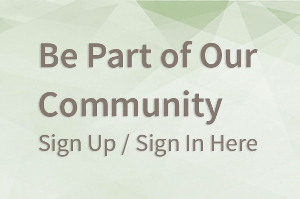BK Blog Post
Social Sector Meets Start-Up Efficiency
 Posted by
Shabnam Banerjee-McFarland,
Sales and Marketing Strategist,
Berrett-Koehler Publishers, Inc. .
Posted by
Shabnam Banerjee-McFarland,
Sales and Marketing Strategist,
Berrett-Koehler Publishers, Inc. .
Shabnam is the Sales & Marketing Strategist at BK and coordinates launch campaigns for a few books per season. She is a San Francisco native born & raised, forever wandering the earth like a unicorn.
More often than not, social sector startups fail to gain traction on enabling the change that they wish to accomplish. Why is this an industry norm?
This past Wednesday, we were joined by author Michel Gelobter, who opened the discussion for exploring alternative avenues for streamlining the nonprofit sector in order to resemble that of tech startups. Gelobter pointed out that the majority of the nonprofit sector operates under archaic structures – a structure that wastes more money and time without adequately responding to the data to support the desired change.
The need for efficiency in the social sector is urgent and vital to sustaining change that creates a big impact, in whichever issue the organization wishes to confront. A great deal of money, energy and time is lost with the current method of testing and gauging impact. Gelobter has worked with a wide variety of social change nonprofits, specifically focusing on environmental justice and sustainability.
He’s also worked with a number of tech-startups, and discovered that extracting the culture of being financially and organizationally lean, as done in business startups, would greatly benefit the social sector.
For Gelobter, Lean Change centers on 4 main principles;
- Fail fast – Sharing stories of failure, and receiving feedback from the impacted communities or organizations quickly. This is also a popular trend that is debated at great length in the tech industry.
- Customer Development – This was a difficult concept to grasp, but Gelobter argues for rethinking how the social sector serves its customers. In other words, how social change nonprofits view their contingencies as customers who require maximum satisfaction from their services.
- Agile Development – Growing efficiently and thoughtfully, and accounting for the feedback that was gathered in customer development. Agile development calls for a new approach for how nonprofits test change-making hypotheses.
- Efficiency – Relentless efficiency is potentially the most vital step in sustaining social change nonprofits. Efficiency guides the way that social sector nonprofits can test their change hypotheses quickly while evaluating the metrics of their success and in turn saving money, time and energy.
Transposing the structure of tech startups into the social change sector poses many difficult paradoxes, but moreover, it creates opportunities for nonprofits to flourish and actually be and see the change they seek.
CommonLit, an organization that I will be working with this summer, has witnessed its success by operating under the Lean Change model. They’ve conducted studies in underserved communities, responding quickly in order to increase growth in literacy rates in K-12 students. This nonprofit start-up is a prime example of identifying the need for change (the large percentage of illiteracy) by asking their customers (K-12 students and teachers) what kind of material they actually want to read and discuss. They then work from this point to upload as much free content as possible based on the responses from their customers.
Since conducting this study in these communities in Boston, they’ve secured grant-funding opportunities to continue to provide free texts for students, founded on the principle that these are the materials that their customers specified as necessary to solving the illiteracy problem. Not only that, they’ve entered the terrain of a fully functioning nonprofit, and exiting unstable start-up territory.
The major reason for using this structure of testing hypotheses quickly and efficiently, gauging the impact, and listening to the feedback of the customers (the targeted contingency) is that the nonprofit sector is; a.) Already incredibly “lean” and b.) The beneficiaries are not the people investing in the project, but rather the customers. Combining a lean productivity mentality to the social sector ensures that the work being done will have more opportunities for results and achieving justice.





